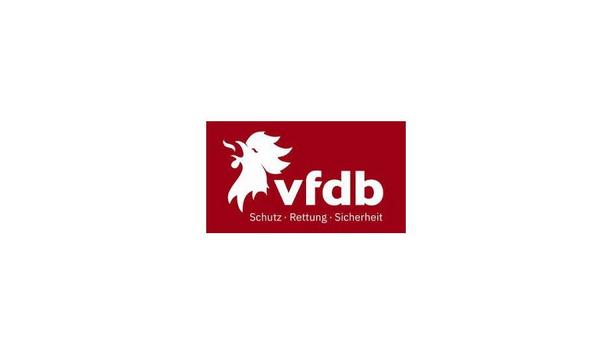German Fire Protection Association (VFDB) - Experts & Thought Leaders
Latest German Fire Protection Association (VFDB) news & announcements
The rescue service in Germany is currently facing the greatest challenges in its history. Mathias Duschl from the European Resuscitation Academy pointed this out. The Swiss network of experts is concerned with improving emergency services systems to save more people from cardiac arrest. Within just six years, the number of emergency services deployed had increased by 134 percent, Duschl reported on the final day of the 65th annual conference of the Association for the Promotion of German Fire Protection (vfdb) in Duisburg. emergency rescue equipment Duschl spoke of an “over-alert” of emergency rescue equipment. The rescue service is being misused as a “health service fire department”. At the same time, he gave various reasons for the development. To make the rescue service fit for the future, a fundamental redesign of the entire emergency care system is necessary. Structural changes are necessary, said Jörg Wackerhahn, chairman of the working group “Fire Departments in the Rescue Service” (AG FReDi). “The way things are going now can’t continue.” life-saving measures The time until the emergency service arrives can be significantly reduced through resuscitation measures The topic of “rescue services” was one of the focal points of the third day of the congress. The medical director of the emergency service in the city of Oldenburg, Jörg Gellern, presented a helper app that has been introduced by several municipalities. Geller pointed out that 72.9 percent of all cardiac arrest cases occur inside homes. In addition to possible telephone support from the control center, the time until the emergency service arrives can be significantly reduced through resuscitation measures carried out by laypeople. To date, in almost 60 percent of cases, the most important life-saving measures were not carried out in the first five minutes. digitalization and technical progress With the introduction of the first aider app, up to 6,000 additional first aiders were registered in the Oldenburg area, who are alerted by the control center in emergencies. In the medium term, the goal is to recruit up to 10,000 helpers. Federal firefighter Klaus Friedrich also pointed out the high number of cases of sudden cardiac death. 150,000 people are affected every year. As on the previous days, the last day of the event was all about digitalization and technical progress in emergency response from tablets at the scene to drones. ideal conditions vfdb President Dirk Aschenbrenner, as well as Vice President Dr. Anja Hofmann-Böllinghaus was confirmed in office, praised the Duisburg conference as another great source of inspiration for fire and disaster protection as well as rescue and safety. “This 65th event once again offered ideal conditions for dialogue between research and development, manufacturers and users and thus important suggestions for future developments,” said Aschenbrenner at the end of the congress. At the same time, he acknowledged the particularly large turnout. Around 700 experts came to the Mercatorhalle in Duisburg. The next vfdb annual conference will take place in Ulm.
According to the findings of the fire department, rescue services and civil protection, the use of aircraft for emergency response in Germany urgently needs to be improved. In particular, helicopters, drones and fixed-wing aircraft need to be better integrated in terms of mission tactics and communications. In a joint position paper, the Association for the Promotion of German Fire Protection (vfdb) and the German Fire Brigades Association (DFV) provide advice on appropriate regulations. According to vfdb President Dirk Aschenbrenner and DFV President Karl-Heinz Banse, the aim is to provide assistance for the deployment of fire departments and other participants in hazard prevention, both for everyday use and for preparation. Recent forest and vegetation fires A simplification of the requirement paths and alignment of the cost structures "The use of aircraft in hazard prevention, especially in area situations, but also in unusual events in exposed areas, is more topical than ever," emphasize DFV and vfdb. This was particularly evident during the heavy rainfall disaster in Rhineland-Palatinate and North Rhine-Westphalia last year. But also the recent forest and vegetation fires had shown the deficits. In a seven-point catalog, the two organizations demand, for example, a simplification of the requirement paths and alignment of the cost structures, which - as they say - "must in no case be to the detriment of smaller communities in particular." Emergency services and task forces Furthermore, it is necessary that the request for the first one or two aircraft, for example, helicopters for human rescue with winch or with external load containers for firefighting support from the air, becomes possible for the first officer-in-charge quickly, easily and directly via his responsible control center. The possibilities and limits of deployment would also have to be part of the training According to the experts, the possibilities for cooperation and utilization of all operators, both in the air and among the emergency services and task forces on the ground, must also be improved. The possibilities and limits of deployment would also have to be part of training. "This requires the expansion of training positions, which have been far too few to date, and further opportunities must be created," the position paper suggests. Operations for hazard prevention Other EU countries, such as France, which has taken on the central training and advanced training role in aircraft operations for hazard prevention in Europe with its civil defense school in Valabre, are cited as possible role models. Another criticism is that the federal government's civil defense helicopters are currently used Multi-purpose helicopters are the only means by which people can be rescued from absolute emergencies, according to DFV and vfdb findings. "We need so many of them that we can deploy the necessary help from the air anywhere in Germany in a sufficiently short time," they demand. Another criticism is that the federal government's civil defense helicopters are currently used almost exclusively as rescue helicopters. "This is not appropriate to the meaning of the word and is also not sufficient for this purpose," it says verbatim. Currently, it is a rather smaller type of helicopter (EC or H 135) with very limited capabilities, it said. However, any civil defense helicopter must be useful in disaster control and extended emergency response and must also be capable of operating at high altitudes and in poor visibility conditions. Data transmission to the ground forces Among other things, the helicopter must be capable of transporting at least 2,000 liters of water as an external load and be able to accommodate at least six fully equipped emergency personnel and other equipment, as well as being able to immediately deploy a winch to rescue people from endangered situations. In addition, the possibility of transporting recumbent patients with the appropriate emergency medical equipment and the possibility of generating image data both as video and infrared with data transmission to the ground forces are named as necessary. As "not goal-prominent" the position paper calls for Germany the employ fire-fighting airplanes, since they can be used only in a few of the task areas.
From the structural situation to the hazards to possible reactions for care management and staff: the Joint Committee on Fire Prevention Education and Fire Safety Education of the German Fire Brigades Association (DFV) and the Association for the Promotion of German Fire Protection (vfdb) has worked up the topic of "Behaviour in case of fire in care facilities" with a technical recommendation. building regulations and technical codes "Offered is an easy-to-read guide that provides the necessary background information to be able to make the right decisions in time before a fire starts," explains Frieder Kircher, Chairman of the Joint Committee. Technical offer is intended to close the gap between the building regulations and codes The technical recommendation is intended to close the gap between the building regulations and technical codes on the one hand and the general recommendations for emergencies on the other. It is addressed to those responsible in the facilities, i.e., especially the operators. Technical recommendation "In the time from the discovery of a fire to the arrival of the fire brigade, the nursing staff are largely on their own and can do many things right if they are prepared for the emergency. This is where this expert recommendation should help!," says DFV Vice President Hermann Schreck. He thanks the members of the working group that prepared the expert recommendation: Willi Deml, Karlheinz Ladwig, Michael Gerhards, Wilfried Velten, Jörn Klaas, Ralf Höhmann, and Lars Inderthal. The technical recommendation includes the following areas, among others: Dangers of fire and smoke, special features in nursing homes, hospitals, and similar facilities (structural requirements, safety installations, organizational measures), recommendations on how to behave in case of fire (keeping calm, containing the fire - closing doors, alerting the fire brigade, rescuing and evacuating, Fire fighting, Waiting for the fire brigade) and preventive measures to support in case of fire (preventing the development of fires, condition of escape routes, preventing the spread of fire and smoke, training of fire protection and evacuation assistants, providing aids for rescue and evacuation).
The New Future For Fire Agencies
DownloadThe Eight Key Trends in Fire Detection in 2023
DownloadA Digital Platform to Improve Fire Safety Compliance and Inspections
DownloadOvercoming the Challenges of Fire Safety in the Paper Industry
DownloadCarbon Monoxide: Creeping Killer Caught In The Act
Download











